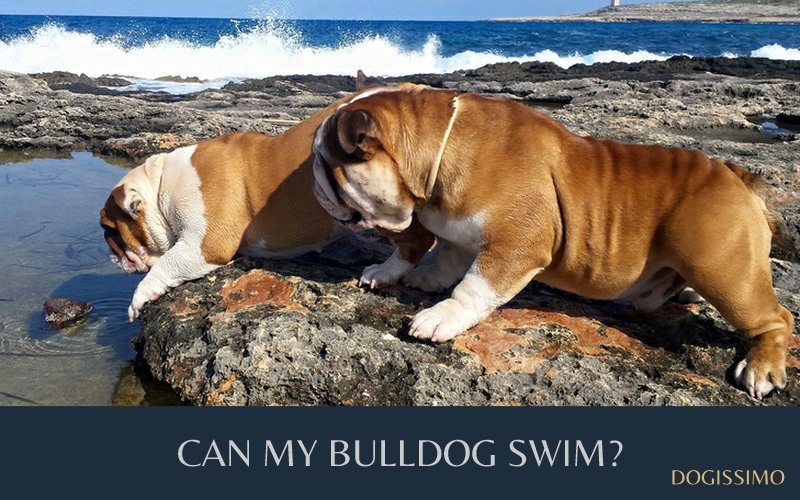Do you know if your dog can swim?
To many people, the concept that some dogs might not be able to swim does not make any sense-unlike people once they pass the baby stage (when we tend to float naturally) dogs do not need to be taught how to swim, they simply get right on with it once they land in the water!
However, while it is certainly true that plonking your dog in the pool will result in them making all of the right moves required to stay afloat, some dogs will sink regardless, and will not be able to maintain their own buoyancy or take care of themselves in the water.
There are various different reasons for this, all of which come down to a combination of factors relating to the conformation and build of certain types of dogs-and in this article, we will look at what sort of dogs cannot swim in more detail, and why this is.
Swimming and conformation
In order to be able to swim successfully, your dog needs to be able to manage several things at once-keeping their nose above the water in order to be able to breathe, maintaining the right position in the water to be able to propel themselves forwards, and having legs that are capable of successful propulsion.
Any dog that does not possess all of these three traits will not be able to swim very effectively, if at all-and there are a surprising number of different types of dogs that are apt to run into problems!
What sort of dogs usually cannot swim?
A fairly broad range of different types of dogs are either totally unable to swim and will simply sink, or are not well-equipped for swimming and will either find it a struggle, or will not be able to maintain their buoyancy for very long at a time.
Some of the most common types of dogs that often cannot swim-and why-are:
- The English bulldog-this fella is the ultimate sinker! They are square and stocky in build, with short legs and brachycephalic faces. Their body weight and density makes them prone to sinking, whilst their short legs are not very effective at propulsion.
Additionally, their flat faces make it virtually impossible for them to keep their heads above the water in order to breathe at the same time as keeping up the horizontal body position necessary to maintain their forward momentum and stay afloat.
- Other brachycephalic breeds including the pug, French bulldog, Boston terrier, Boxer and Pekingese are all potential sinkers too, because the shape of their faces means that it is a challenge to both keep their noses above the water, and maintain a horizontal swimming position.
However, some dogs of these breeds may be able to swim to some extent, depending on how exaggerated their features are.
- The Basset hound and the Dachshund both exhibit a form of canine achondroplasia-dwarfism, in layman’s terms-that gives them their long bodies and very short legs. These traits mean that they cannot swim effectively, as they cannot get enough propulsion from their legs, and so, are apt to sink.
- Heavy, stocky dog breeds such as the Staffordshire bull terrier are among those that are often borderline when it comes to swimming, and some dogs of breeds like the Staffy may be able to manage perfectly well, while others will not. This is due to the sheer weight of the dog’s muscle mass, and in some cases, their large and heavy heads too.
It is important to note that for some breeds of dog, whether or not they can actually swim can be pretty variable depending on their own unique shape and build, and there is no real one size fits all yes or no answer for every breed.
However, if you own a stocky, short-legged or brachycephalic dog, or of course, a disabled dog or one that for any other reason might soon find themselves out of their depth in water, it is a good idea to try to find out if your dog can swim within a safe, monitored environment such as a canine hydrotherapy pool, where there is help on hand if they do get into difficulties.
Taking care of non-swimming dogs around water
If you know or suspect that your dog cannot swim, it is of course important to take special care of them anytime that they are around water, such as a lake, river, pond or canal.
Never leave a non-swimming dog unsupervised around water deeper than their chest or with sides too high for them to climb out of, and if you plan to go on a boating holiday or spend time with your dog around water for any other reason, consider investing in a special doggy lifejacket for them!








Add comment
You must be logged in to post a comment.